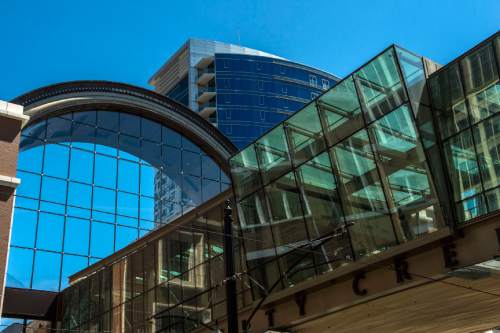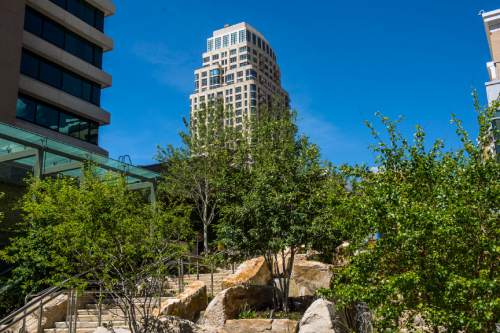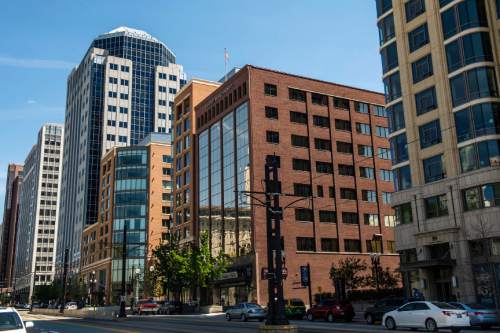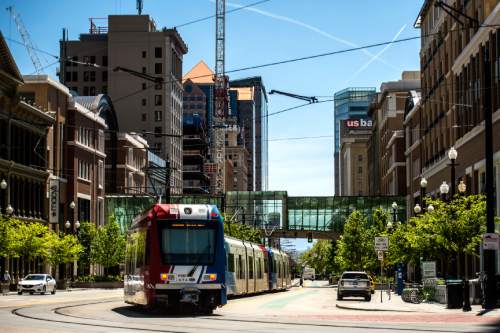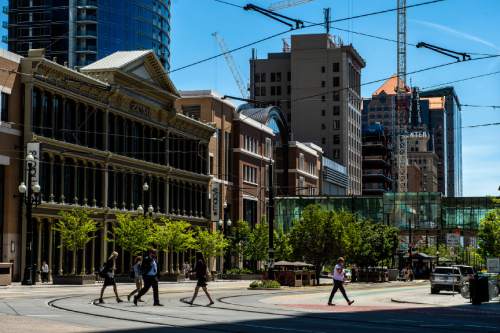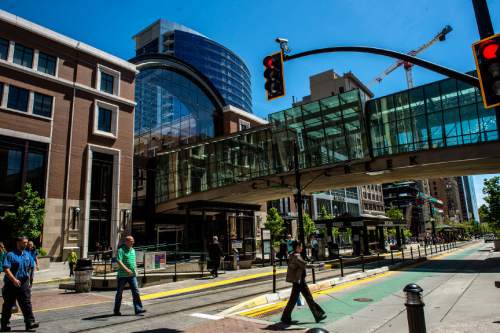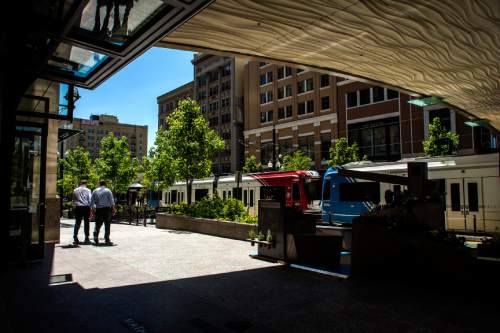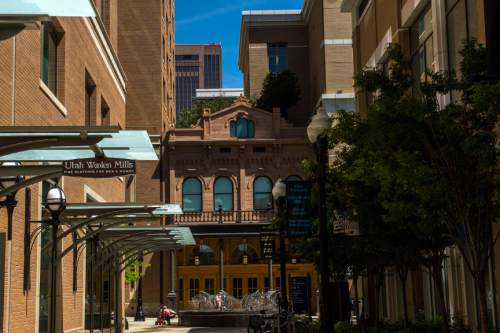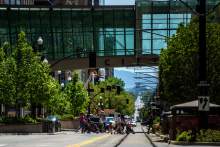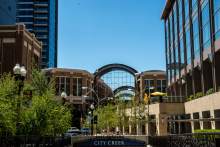This is an archived article that was published on sltrib.com in 2015, and information in the article may be outdated. It is provided only for personal research purposes and may not be reprinted.
As City Creek Center accepts yet another award, a debate continues over how well the Salt Lake City mall connects with the surrounding downtown.
Unveiled three years ago as one of the nation's largest urban-redevelopment projects, City Creek combines more than 100 stores, offices and high-end residences into what developers and planners call "mixed use." The $1.5 billion-plus, 20-acre complex is accented with fountains, a synthetic creek, a retractable glass roof and a pedestrian skywalk over Main Street.
City Creek was built in the middle of a recession, the joint effort of Michigan-based Taubman Centers, owner of 21 regional U.S. shopping malls, and Property Reserve Inc., a commercial real-estate arm of The Church of Jesus Christ of Latter-day Saints, headquartered just north of the mall.
By key measures, City Creek has hit its economic stride, topping $250 million in yearly taxable sales, according to state data. Proponents say the mall has also drawn nearly 16 million visitors downtown.
Top executives involved in the project will be honored Thursday by the International Council of Shopping Centers, a worldwide industry trade association. The council selected City Creek Center — winner of a number of other awards since its 2012 debut — and the site's co-designer and operator Taubman Centers for its top accolade as "the most outstanding example of shopping center design and development for 2014-2015."
To William Taubman, chief operating officer for Taubman Centers, City Creek is a success for its contribution to Utah's capital. He said the project not only "reflects the needs and desires of Salt Lake, but also creates an anchor for continued development and improvement of downtown."
Taubman paints an intriguing picture of the company first advising the LDS Church on its options for the former ZCMI Center and Crossroads Plaza malls on Main Street, then collaborating on designing City Creek and recruiting major retail tenants such as Macy's and Nordstrom.
In one sense, he said, the Utah mall embodies classic principles of shopping-center design, with anchor stores at either end and a layout that exploits foot traffic by giving shoppers a seamless experience.
"We have a very well-lit, convenient and safe shopping environment," the company COO said, "[along with] wonderful sightlines to the stores, clear organization and direction, no confusion for the customer."
But City Creek also was designed specifically for Salt Lake City, he said, particularly with its inclusion of condominiums and offices.
"It required a different solution than the typical suburban mall," Taubman said. "So the product we have, in every aspect, reflects the context of the environment the project sits in."
That's where some urban-planning proponents take a different view, arguing the mall is unnecessarily closed off from the rest of the city.
City Creek was designed to capture customers and market share for retailers, said Stephen Goldsmith, who was Salt Lake City's planner when mall plans were on the drawing board. And, in that regard, he said, the designers met their goals.
"But those goals," Goldsmith said, "are different than those for a downtown which is not interested in capturing, but rather engaging, a broad, inclusive community across incomes and not a place for only those people who have an ability to participate."
Referring to past controversies over City Creek's taking control of a public segment of Main Street and its sky bridge, which lets pedestrians cross Main without leaving the mall, Goldsmith called it "privatizing the public way."
"It creates a we-they," he said.
Erin Silva, a prominent Salt Lake City architect, urban designer and University of Utah lecturer, called City Creek "one of the biggest mistakes we have made in the Salt Lake City urban core, ever."
"It could have been an integrated, multiuse project, open to all sides, inclusive, and aligned with best mixed-use urban practices," Silva said, "and more accessible to pedestrian traffic in our downtown core. It is not."
But a downtown advocate countered that those opinions overlook what is happening right now in the city's urban heart.
"Main Street is thriving and it would not be if City Creek Center had not been built," said Jason Mathis, executive director of the Downtown Alliance, representing downtown merchants. "I attribute a lot of downtown's success to City Creek Center's development and the design."
Mathis pointed to 222 Main, an upscale office tower farther south on Main Street, which now houses major offices for the global investment firm Goldman Sachs.
While similar projects stalled in other cities during the economic downturn, the developers of 222 Main, Chicago-based Hamilton Partners, were emboldened to proceed with the skyscraper "because they saw what was happening down the street."
City Creek, Mathis said, "has changed the larger system of downtown."
To Taubman's mind, City Creek's layout reflected the realities of what major retailers need.
"I am a conduit for what the stores require in order to be successful, which is based on how people like to shop," he said. "In the real world, the stores are going to face in or they are going to face out. And if they face out, you don't have the same project, because you have no department stores."
tsemerad@sltrib.com Twitter: @TonySemerad


